I posted on Facebook about it, but I’ll repeat it here as an intro – I was on the phone with someone I’ve known since before I had my own company, and he’s been a customer of mine for basically as long as his company has existed. Bill Wiley & Associates is 15 years old. Wow. But, I had to do the math in my head real quick, and I realized: Midnight Ryder Technologies turns 20 years old next year. Holy crap.
I’ll do an “official” post on the Midnight Ryder Technologies website after the first of the year, along with a new logo for it incorporating 20 years. But this sort of pulls together some of the personal side of it, and stuff I won’t be putting in the official one. Well, and some of it that will end up in the official one.
In The Beginning…
I usually credit the end of 1999 as the beginning of Midnight Ryder Technologies, but that’s a simplification of things. It’s always gotta be just a little convoluted, and there’s multiple dates you could use as the start date for the company. The one I picked was… well, kind of arbitrary, to be honest.
In 1999, I decided it was time to realize my dream: I wanted to write video games. I was already a software developer for a living, making a pretty decent wage, seeing the world, and getting paid to do cool stuff with big ass machines (I was doing industrial automation). I still had a full time job, and plenty of safety net to work from, so there was no downside to giving it a shot.
I already understood product development cycles and all that stuff, and picked a rapid development language (Visual Basic 6) and went to town on some ideas. I settled on one I temporarily called “Diamond Mine”, while picked up a little physics from Boulder Dash, a Commodore 64 era game, but made it a puzzle game. I set out to start small: make a small game, from end to end, release it, and market it. I wanted to know the process, since I had plenty of time. That was early 1999.
It took a while to do the graphics and programming. Eventually I got around to sound, which proved to be fun: sitting in the basement of my house, breaking and beating on things ranging from eggs to glass to come up with sound effects for the game.
Designing the game was fun – I started with a premise, combining Boulder Dash (which might be considered a granddaddy to a lot of games, dating back to 1985, and having been ported to damned near every computer and console ever made (and there’s still new versions being released.) I originally started out with just gems to line up and collect (you clicked to pick up gems – you could pick up just one, but you didn’t score much. But, if it had a partner right beside it, you got small multiplier. Chain as many of them as possible together, and you get progressively bigger bonuses. You might recognize this mechanic from a lot of games of it’s type, but don’t stop reading just yet.) That was a bit boring, so I added boulders – if they landed on a gem, they destroyed it, and cost you points (which is a rare concept – normally in a puzzle game, you can’t end a level with a negative score. Boulder Panic! was a bit harsh.) I then added “removable boulders” – gold and silver – that could end up playing out a bit differently than the boulders. Then, if you didn’t make a move fast enough, the game would just drop a boulder at the top of the screen randomly, potentially costing you lots of points. It kept the pressure on you the whole time you played.
I believe it was March 1999 that Boulder Panic! 1.0 was released. OK, now, you’ll notice it’s no longer Diamond Mine. (OH, hey, ultra-trivial bit here: Emerald Mine was a clone of Boulder Dash for the Amiga. Diamond Mine’s name was basically an homage to that.) I picked Boulder Panic! because, well, the boulders became a really big deal, game play wise, and the Panic! because well… the stupid timer for when it was going to drop a boulder in a random location would make you panic a bit.
The first version SUCKED. It was all randomly generated levels, which often produced some really boring or unfair levels. It also annoyed me, after I had released it, because it was lacking. And, well, it had bugs. And, the graphics sucked. Go back and look at that screenshot above again as a reminder of how much the graphics sucked.
So there was 1.0.1. And 1.1. And 1.2. In December 1999, everything moved: I bought my first domain! MidnightRyder.com was registered on November 19th, 1999, and the new website went live in December. Prior to that, I was using a Freeservers site – which, oddly, is still up nearly 20 years later! (The Wayback Machine, unfortunately, only has versions that date back to 2000, not the earliest versions.) The company became “MidnightRyder.Com” and was a sole proprietorship (and still is to this day). I sold the game through a 3rd party online software distributor, so they handled things like sales tax (a thing I still do) And I started on Boulder Panic! 2.
The game sold online slowly but surely. We’re not talking a ton of cash here, but my goal was accomplished; learn how to develop, release, market, and follow up on a game. Now I could start working on some more serious stuff since I kinda-sorta-knew what I was doing.
If this were a movie, we’d end up with a breakaway scene in someone else’s house, three programmers sitting around a table with Microsoft representatives pitching their idea for Diamond Mine, an online puzzle game for Microsoft’s online game portal. Microsoft ends up telling them that it’s too close to another game, Diamond Mines, and suggests a new name: Bejeweled.
Yes, I had started even before PopCap Games, a company that later sold for a billion dollars to Electronics Arts. PopCap ended up being one of the major reasons why puzzle games became big money. We even almost started with the same damned game name. But, alas, they ended up with a billion dollars, and I didn’t. A lot of that boiled down to us playing two different games – I was interested in direct distribution of one-man developed games, they were looking at making it into a serious business. For me, this was started as a side gig, something fun to do and make a little money. Maybe later I’d be more concerned with making real money.
Boulder Panic! usually got stuffed in the “Match 3” puzzle game category – but it wasn’t. Surprisingly, all of the games I released during this phase of the story end up being just unique enough that I haven’t seen someone else do the same thing in the same way. I don’t want to do blatant clones of anything – I want to do weird stuff that twists things in new ways.
Between Boulder Panic! 1.0 and 1.2, it had gained some new functionality. With Boulder Panic! 2, I upped the game a bit, and incorporated all the levels I had created for 1.2 – instead of relying on randomly generated levels.
Then Boulder Panic! 2 DX came around, a Direct X version of the game. At this point, something cool happens: a publisher contacts me, and wants to put Boulder Panic! 2 DX on shelves. Now, it’s hard to explain how difficult getting a video game on shelves was back in the early 2000’s – for an indie developer, it was neigh impossible. But, there I was, with a damned contract in my hand for it. And you bet I signed it.
Also in the 2000, I found Randy Glover. That doesn’t ring a whole lot of bells with most gamers, even if you date that far back (the 1980’s.) Jumpman and it’s “lite” version, Jumpman, Junior were two of my favorite games, combining both action, some random elements, and puzzles all into one hard as hell package. We chatted back and forth, and I talked him into letting me to an authorized sequel to Jumpman. The only restriction was I couldn’t do a major console version (I could do PC, Mac, Linux, and portable OS’s like PalmOS. But, no Nintendo, etc. versions. If it was that popular, we’d make a separate deal.)
Randy gave me shitloads of information, including things like dumps of the original levels (which I still have!) and music (which I lost somewhere in a hard drive crash). The original name for the sequel was “Jumpman: 2049”, but eventually came back around over a decade – but, that’s a later story.
And, around the same time, two more games came out: Tile Panic!, and Flip Panic! Now, I did something interesting: Boulder Panic! was custom programmed from start to finish, and so was Tile Panic!. I realized if I was going to keep writing puzzle games, I was going to need to quite starting from scratch every time, so I wrote a game engine for Flip Panic! that was supposed to be re-used on future puzzle games. It took extra time to develop the engine, but worth it for future titles beyond Flip Panic!. Of which there were none – at this point I had written, released, and marketed:
- Boulder Panic!
- Boulder Panic! 2
- Boulder Panic! 2: The Challenge (an online competition version of the game)
- Boulder Panic! 2: Christmas Bonus! (Extra levels, my sarcastic response to not getting a bonus at my day job.)
- Boulder Panic! 2 DX
- Tile Panic!
- Flip Panic!
7 game releases – not bad. That’s 7 more than most indie game developers ever ship. Still not any sort of a great success, but I did it.
Hey Now, You’re a Rock Star, Get Your Show On, Get Paid
Alright, I wasn’t a rock star, though I had a rock star moment. Something that happened with game development that didn’t happen with industrial automation: I got asked to talk about it. I was already blogging about game development a bit (including things like development bits from Jumpman: 2049, and I created a login for Randy Glover, who also blogged a bit about his 3D-ish sequel on the site, Jumpman 2.
Jeff Tunnell is one of the “old men” of the game industry. He co-founded Dynamix, which produced games like Arctic Fox for Electronic Arts (which is cool, ’cause it’s another “holy crap, that guy” moment: Arctic Fox was one of my favorite Amiga games.) He’s got a long list of credits, including Starsiege: Tribes and Tribes 2. Which again, unless you date back to that era, doesn’t real ring many bells for most people. Anyway, I get an email from Jeff Tunnell that boils down to: “Hey, I’ve got a new game engine. You should look at porting Jumpman: 2049 to it.” I didn’t. But, I messed around with the engine quite a bit, and it was cool (and I did later find a use for it.)
Then he invited me to speak at IndieGamesCon, a convention in Eugene, Oregon centered around Independent Game Developers. So, I did – and it was a hell of an experience.
I networked, and found folks who wanted to work together on a title: Trajectory Zone, a 3D take on Scorched Earth.

Then, the next year I returned again to speak, and that’s when I had a true rock star moment; some of the indies came up with the idea of doing a big of a concert type thing the night before the actual convention (since everyone was arriving on flights the day before.) GarageGames (the host of IndieGamesCon) had booked the Wild Duck, an establishment for drinking and bands, and it sat about 450 people if memory serves right.
See, there’s this sort of creative intersection for indie developers: a lot of them I knew played in bands. And their idea for doing a mini-concert sort of thing made a lot of sense, but was risky: they’ve never played together before. Thing is, there was no shortage of drummers, guitar players, bass players. What there was a lack of was singers. Now, if you know me, you know I’m fearless in front of a crowd. And, hell, I’m generally fearless anyway. I said I wasn’t any good as a singer, but damn it I’d do it anway if it would inspire others to. So I signed up to sing three songs.
Only twice since grade school have I sang in front of any sort of a crowd. Once was drinking a rum and coke in front of The Vagabond in Wichita while someone strummed out songs – they started “Cover of the Rolling Stone”, and I nailed it. The other was there at the Wild Duck – things shook out so that I only did one song – ZZ Top’s La Grange. I’ll never make a living as a singer, but damned if that wasn’t cool as hell. The only thing I regret: that thumbnail sized image in the corner. I wish I had a full resolution version of that, ’cause not only did I sound the part, I looked the part.
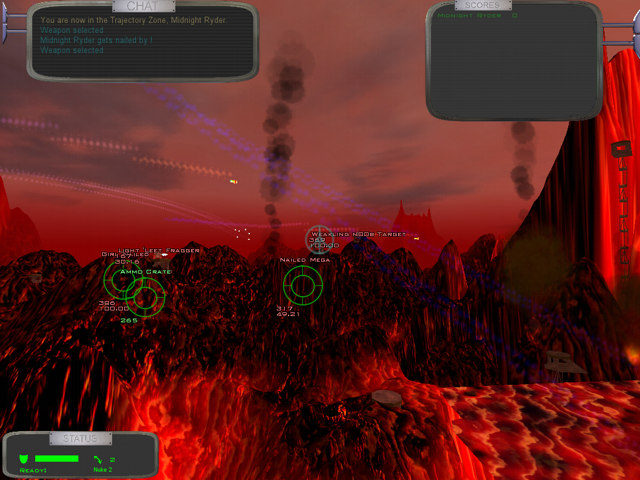
At the con I ended up being interviewed a few times, including for CNet (back when CNet was it’s own thing), and had a standing offer to be on their show if I’d fly down to San Francisco. That was a missed opportunity on my part – I should have done it. (Somewhere, I’ve got a lot more of this experience written down on the blog – there’s a lot to it.)
Things look pretty rosy, to be honest. I’ve got games selling online, I’ve got a full time gig at the same time, I’ve got some name recognition going, and I’ve got a serious 3D title in the making.
I’m not sure what ancient deity I pissed off, but that was the high point of game development for the company, and it’s all about to go to hell.
The Curse of Gamer Zone
In 2003, I was laid off from my day job of 12 years. I didn’t have as much money in the bank as I would have liked to, but an interesting opportunity came up: they were going to contract out some of the work to me (at a higher pay rate. Which, BTW, would have been a seriously illegal thing these days because of some changes to labor laws.) So, I’d have at least a little buffer.
Oh, and I’m going to condense a lot of stuff into this area – I know, way too much detail in the previous two sections, and not enough here. There’s a reason for that: a good chunk of what happens during this part of the existence of Midnight Ryder Technologies is documented in book I wrote. I don’t need to write it again.
The choice was made: I’ve got a company, and I’ve got a little momentum going, let’s make this company a reality. I had already done some websites, network design and installation, desktop support, ad programming. I had a decent skill set available. At $35 / hour, it wouldn’t take much to make ends meet. And, of course, I had games that were selling off and on through various websites.
And, a new option came up: there were people willing to hire me to consult on game development projects. Not a lot, but they were interesting: a couple were on the design side, a couple were on the development side. I did things like AI for soccer, voice over IP for another title, etc. Neat stuff, from my perspective. I’ll admit my favorite game contract was for doing some physics stuff for vehicles, and I spent a week straight playing nothing but Grand Theft Auto: Vice City, because that’s the style of vehicle physics they wanted (and I became an expert at it.)
I’m not saying the money was great, but we (I was married) were surviving. Then the curse happened: someone invited me to help them out on a new LAN gaming center they were building. I got involved. I took over leadership of it. All of my game development efforts and contracting efforts suffered as I spent more and more time centered on making Gamer Zone work.
Now, during that, some game development related things happened. Remember that cool contract from the previous section that would put Boulder Panic! 2 DX on shelves as a casual game title? There had been a lot of excitement about it on both ends – and then things went quiet, for almost a year. Even with a signed contract, it never ended up on retail shelves – they decided to pivot their business plan, and BP!2 DX stagnated.
I wasn’t doing anything with it Boulder Panic!, and someone approached me about taking over marketing, and just giving me a good percentage of the sales, and they’d take Tile Panic! and Flip Panic! too. I was busy as hell with Gamer Zone, so why not? Funny: sales for the titles had been on the decline, so leaving marketing to someone else is a great idea – except I never saw a dime. They claimed sales were zero. If I wasn’t in the middle of Gamer Zone, I probably would have went to war over that shit.
It should be noted that isn’t not an uncommon scam in two ways, and still happens today. First, once they’ve got control of your games, they can pretty much tell you anything they want to about sales – you can even bring in a lawyer and potentially force an audit (if your contract doesn’t involve an independent audit clause, consider not signing it.) Second, there were a number of “publishers” have popped up over the years that promise to handle all the complexities of publishing and marketing for indies, but don’t have any real experience (it’s easy to whip up a website and a few testimonials taken out of context, or aren’t real). Or, they’re just spammers. I see one hit the Facebook groups all the time.
The other thing that happened was Trajectory Zone died a horrible, lonely death. The game was seriously promising (don’t let the over compressed 2 generations old images fool you – the game really did look sharp. And some of the stuff I did like particle LoD – back when the engine didn’t support it – helped us pull off cool things like 3D particle based nuclear explosions. Really, the game was cool.) I eventually handed it off to another programmer to finish, even after having done a couple beta rounds here and there, and it just never came back to life. It’s a real pity. I keep considering resurrecting one section of the game as a new game on it’s own, with some single player and multiplayer aspects, but the core game it’s self will never be resurrected.
And, of course, since my concentration was split too many ways, I also let contract game dev gigs fall to the wayside, and failed to stay connected to the communities I was in (very important, if you’re making part of your money as a gun for hire in game development. Your contracts have to come from somewhere.)
That was two years of my life. It was a hell of a ride. I even had a TV show about video games for a while, as a part of the marketing and IP building process. Midnight Ryder Technologies didn’t die, but it sure didn’t do much either. And, in 2006, Gamer Zone shut down, after I lost my house, my car, and got a divorce. Seriously, there’s a whole book on the subject.
That left me… well, fucked. I wasn’t really sure what to do, and took the first gig someone offered me: I scrapped an old Radio Shack and built a restaurant in it’s place (for $5 / hour – yes, that was less than minimum wage, even back then.) I had a roof over my head thanks to friends, so it was time to rebuild.
Rebuilding – The First Time Around
What do you do when you’ve lost it all? Stand up, dust yourself off, and start building again.
Midnight Ryder Technologies didn’t return to game development in this phase of it’s life. Instead, once the first contract came in, it started working towards being about web development. Or anything I could make enough money off of to pay bills.
One stroke of luck was one of my old Industrial Automation customers having me do trips to their site about twice a year. That gave me some decent income, though it wasn’t amazing. I gave up on game development – though the passion for it still remained, I just couldn’t see pulling it off again.
And this is where the story gets kind of… boring and mundane. A lot of what I did was fairly mundane web or app development. There were some cool projects:
- I worked with a couple of people including Mark Shelton of Manilla Road on an independent online music distribution system.
- I did client and server stuff for a video game
- I wrote a cloud based email backup system (OK, when you say it that way, it sounds boring)
- I wrote the demo of and helped pitch a cloud based file storage and profile system
- I did the front interface for one of the worlds largest data sharing systems
I BBAAAARRREEELLLLY paid the bills, but mostly survived. Also of note:
- I wrote my first book, The Story of Gamer Zone. It started out as a blog entry on here, but slowly expanded into a novel that explored business failure.
- I wrote two new games – The Horror Game, a role playing game based around 80’s horror movies, and The Plastic Army Game, a game centered around little plastic army men. Instead of video games, both are table top game books that are available on Amazon.
- With the help of other people, I founded The Kansas Authors’ Pavilion.
And then, I got married again. Which meant having a house again, and a little bit of space, and a lot more stress trying to do my part to keep things going. That phase lasted all of two years, then I was divorced again. No, there’s no book on that one.
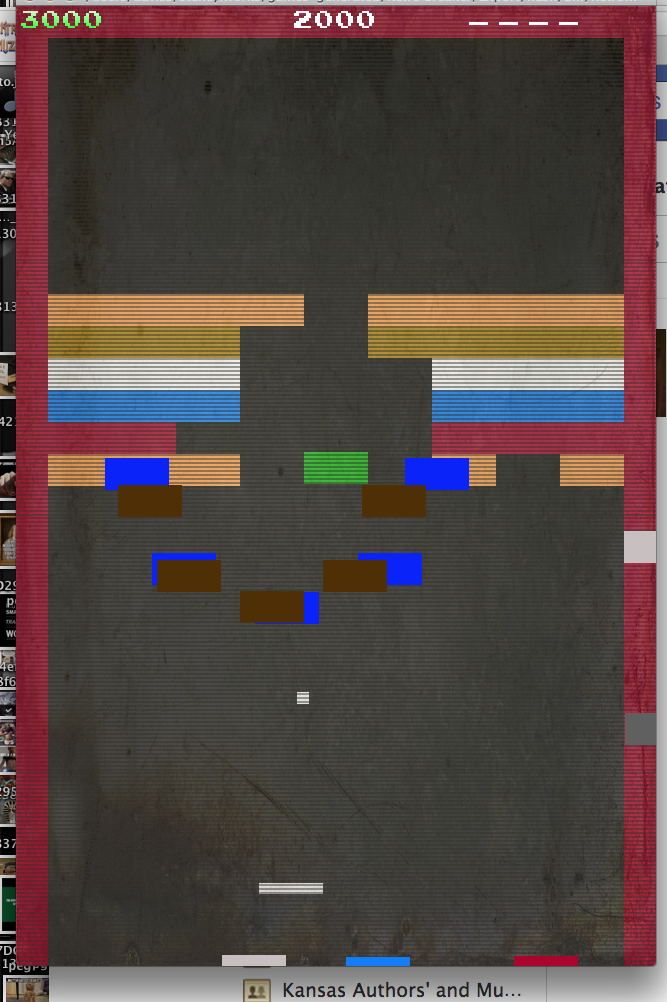
I also started dipping my toes back into the game dev arena, with mixed success. I released RetroBreaker for iOS and Android. The game actually started climbing the charts in some areas, reaching #12 in Egypt (and I have no idea why). RetroBreaker was a repeat of my previous Boulder Panic! experience: the market had changed with the introduction of Mobile platforms, so I needed to sink my teeth in with a small title, and go from there.
With that, I partnered up with someone else, and decided to shoot for much more serious development efforts: remember that game Jumpman: 2049 I mentioned? It got a rename to Jumpman Forever, and a kickstarter to get it done. Unfortunately, it’s not done. Nor is Crucible, a Gauntlet styled game that was also Kickstarted.
Along the way, some other cool game dev stuff happened: first, I ended up on the advisory board of a college degree program the included game development as part of it’s territory (which is cool, when you consider this Kansas, not California or Texas, where game dev is more prevalent.) That resulted in me also getting interns for a bit – the 8-Bit Minions.
The goal was to do some rapid game development projects, and get them out the door. They helped out on two titles – and I’ve got all the assets laying around, waiting to be assembled into a finished title. THEY did awesome. I, however, failed to ship anything. I even picked low hanging fruit when it came to development – stuff that wouldn’t take tons of time and resources to do. They did a great job, and I always feel like I’ve let them down on this one. Though, it’s not game over, yet.

And even stuff like Crucible wasn’t a complete fail. Crucible actually got a lot done on it – for instance, it uses multiple procedural generation systems so that it can produce towns, outdoor areas, underground areas, and space stations, each with a unique level generator that makes the not just feel graphically different, but also very different feel to the layouts. And, it’s seed based, so it’s possible to re-run the same level again for testing (very handy) or competitive score plays. I may be unhappy with how many titles I shipped during this phase of the company (and my life). Heck, even beyond the Crucible and the 8-Bit Minion titles, there’s other stuff just waiting to get it’s final push of development, like Invaders to Infinity – retro styled stuff that throws new twists into the mix. And even if I’m not happy, I still have those assets – and those are an incredibly important part of any game. The designs are done, just need to finish assembling them and making it a game.
Both those failure hurt pretty bad. But, well… there were extenuating circumstance.
Rebuilding – The Second Time Around
I have to admit: that experience of getting divorced a second time knocked my dick in the dirt. I had started building a plan, including getting back into game development, and to just… fucking fell apart. I didn’t realize until latter exactly how much of a haze some of that time afterward was. And, I again found myself living with friends.
One damned slow, agonizing step at a time, I started to rebuild. Eventually I moved out, and got a place elsewhere, then moved again to my own apartment. Things were good enough I could support myself (ahem, though there were a couple panicked phone calls to Dad to make ends meet.)
Then, all of my contracts suddenly dried up. I mean, it was weird as hell – it just all sort of went away. But, I think it was the universe prepping me for a much more serious gig: I’ve spent the last year building a one hell of an electronic distribution system for… well, I can’t actually tell you. It’s still under NDA for a bit longer. Sometime after the 1st of the year, when the beta process is over, I can brag about this one. It’s not often you get to help extend a company into entirely new territory.
And, about three months ago, I moved out of my apartment and my girlfriend and I rented a house together. So, now I’ve got enough space, and things are survivable stable.
Midnight Ryder Technologies Forever
What’s next, starting the 20th year of this company? OOOOoooohhh… I am not going to speculate too much. Aw, who am I kidding? Of course I’m going to speculate, I’m just not gonna say how it’s going to go down.
First, the plan is in place to finish up some of the partial games that are laying around. Seriously, I’ve got graphics and partial games from experimental stuff. I’m also planning on shipping Boulder Panic! 20th Anniversary Edition, which is going to be a BIG FUCKING DEAL for me. And, finally, I’m going to find a way to ship the updates to Jumpman Forever (the game is out, and has been for a couple years, but hasn’t been updated in quite a while, and it’s missing a key component: a level editor. That’s part of the reason for the name “Forever”, so I really need to ship it.)
One running problem is the dependence on on the contract grind, where when one ends, I’ve got to rush to the next one. I think I see a way out now – if I pull it off, then year 20 is going to be a year of redefinition for the company. I’ll never be ONLY a game developer – there’s always so many cool projects to do. That big project I mentioned in the previous section that I’ve spent a year on? I have equity in it. Add a desktop and server support contract it 2019, and a couple of Industrial Automation jobs (I get paid better for those), and it builds a pretty strong foundation for what I need: a combination of the time and the money to spend on game development for a few months at a time.
That’s the thing in all of this – if you’re stuck on the contract grind, you can’t take, say, a month off to get a game written and ready for it’s beta cycle. Some people would scoff at a month – it depends on what game style you pick, and what you’re putting in and not putting in. Not every game has to be a 3D MMO. Pick targets that can be achieved in a reasonable time period, and you’ll ship a game. Don’t, and you may never – or technology may have passed you by if you’re shooting for the top. Somewhere, I’ve got an article I wrote about picking realistic development targets if you’re in it for the money that was written a back in, oh, 2002 probably, called “So you want to start a game development studio?” A good chunk of that is still applicable today.
Anyway, that grind – being on that grind means you don’t find time to finish things, as you have to chase the next contract. There are options to help out, but that’s post for some other day. If you find any way out of that grind – take it, and run with it. For me, that’s what 2019 is going to be about – getting off the grind and stabilizing in a way that allows me to put out more games, and bring the company back to it’s origins: games, and sometimes cool ass projects (preferably ones I maintain an equity in.) The goal isn’t to ship a ton of games – the goal is to stabilize and release a few to help that stabilization process.
So, if I’m going to ship games, what ones to I plan on shipping? In order of priority at the moment (subject to change):
- A pinball game like never seen before (I always wanted to do one, but I want one that does things that can’t be done on a real table.
- Boulder Panic! 20th Anniversary Edition
- Crucible
- Jumpman Forever 2.0
- HRS
- Invaders to Infinity
- RetroBreaker Sequel (design is done – it’s going to be something outlandish, but still be easy to pull off.)
The likelihood of actually hitting that entire list is basically zero. I won’t have THAT much time. A couple of games are pretty simple deals – but, Jumpman Forever 2.0 is going to be a serious undertaking, even if it’s already a game on sale. (Buy yourself a copy, then buy someone else a copy for Christmas 😉 ) I won’t finish that list. I might not even do them in that order – that’s what I want to get done right now, it’s subject to change. BP!20 and Jumpman Forever 2.0 are the two biggest things that HAVE to get done this year, though.
So, that’s it folks. That’s a glimpse into a 20 year old – what was supposed to be game development – company that’s been up, down, in shambles, nearly dead once, recovered twice, released 11 games, worked on more projects than you can shake a stick at, helped people start companies, watched companies die, and more. Seriously, even with all the stuff I wrote, there’s so much more that happened over those nearly 20 years with the business. I could write an entire book about it (but, I won’t – I’ve written one book on business, I don’t need to write another. Or do I? Nahhhh…) I didn’t even get into dealing with projects that have partners involved, traveling to client sites when I had almost no money, crazy customers, failed projects (beyond Trajectory Zone, I’ve got one non-game dev project for a customer that ended up being a complete fail), how the game industry had changed, or… I mean, just a nearly endless list of things this doesn’t 5k+ blog post can’t cover.
It’s been long, it’s been hell at times, and goddamnit… I love doing what I do! 🙂
Getting Old, Getting Grey, Getting Ripped Off, Underpaid…
It used to be a huge number of my game dev posts has a snippet of a particular song on ’em (and blog posts in general used to have snippets from various song lyrics, a habit I’ve gotten out of.) So I’ll leave ya with both the lyric (well, one of two I used to use, actually) and the song it’s self. A song that proves I don’t actually hate bagpipes, I just hate when bagpipes are played poorly, or inside my tent.)
Gettin’ had
Gettin’ took
I tell you, folks
It’s harder than it looks
It’s a long way to the top if you wanna rock ‘n’ roll
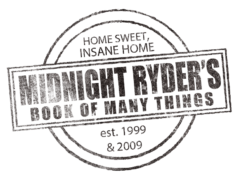

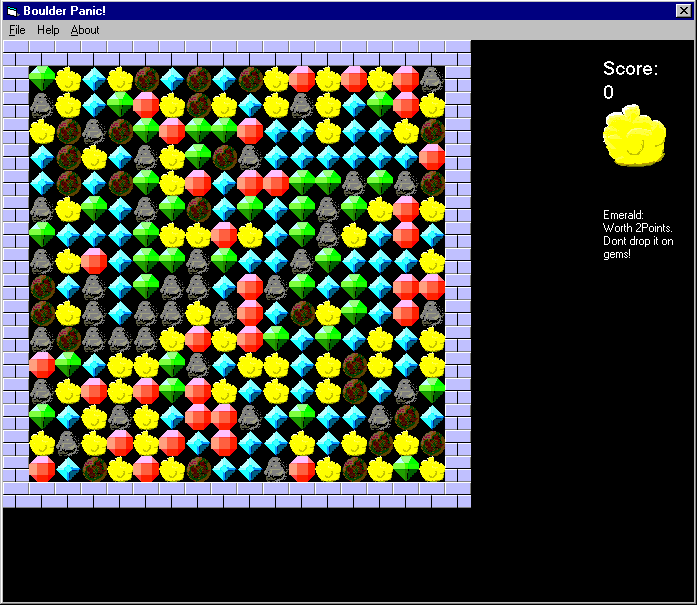

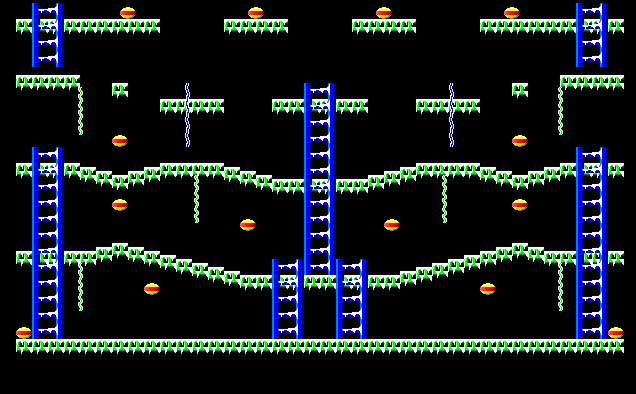
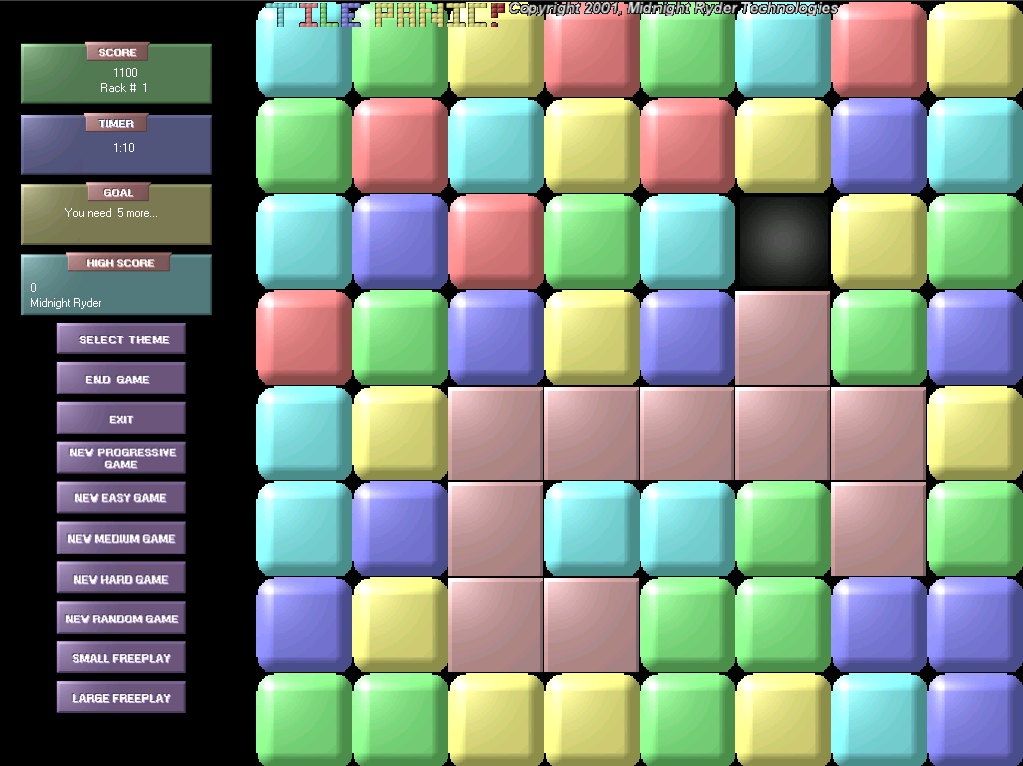
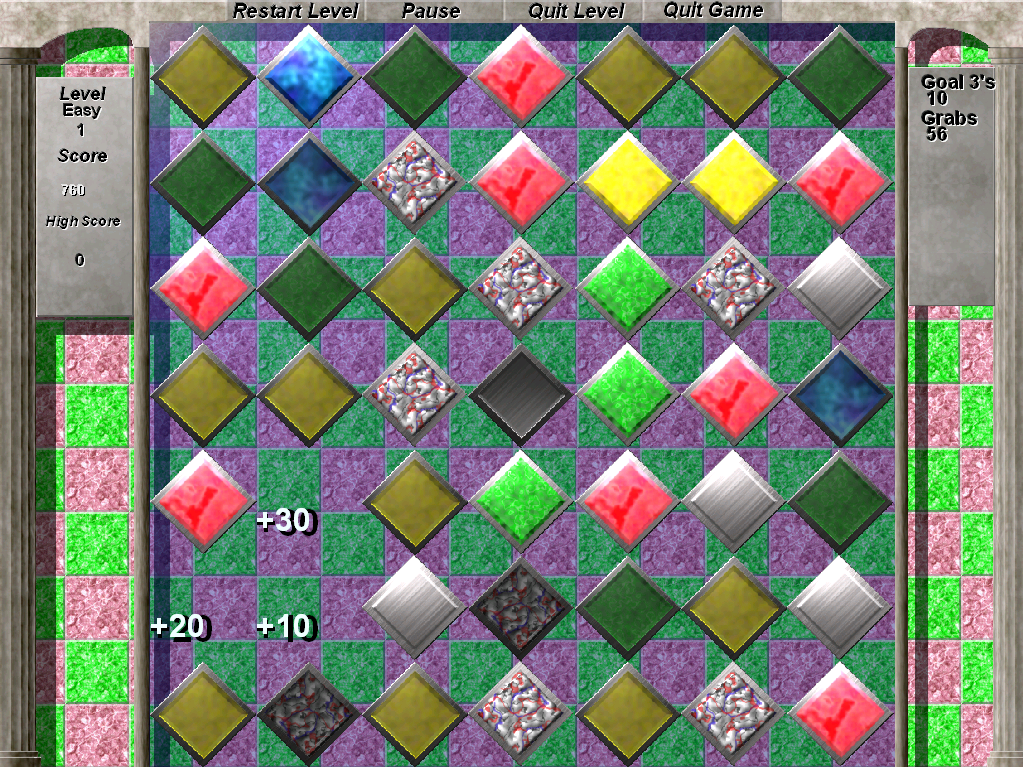
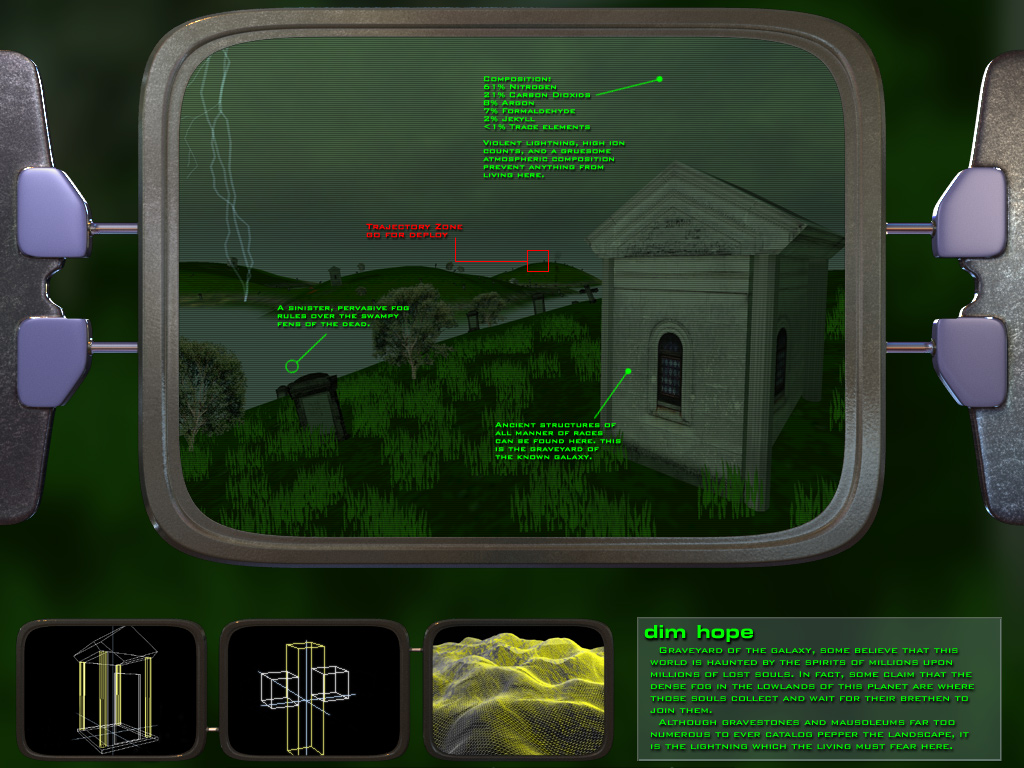
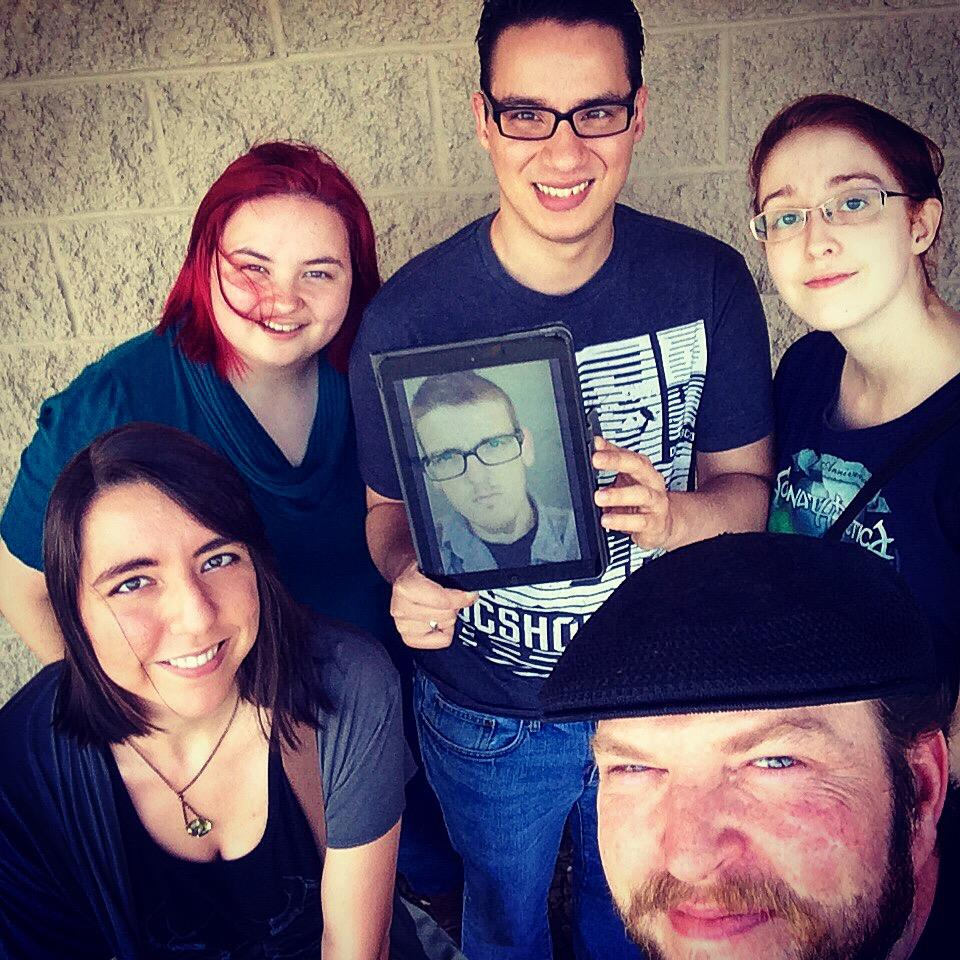
Pingback: Bypass Tumblr's Content Policy | Midnight Ryder's Book Of Many Things
Pingback: Looking Back at 2018, and Looking Forward at 2019 | Midnight Ryder's Book Of Many Things